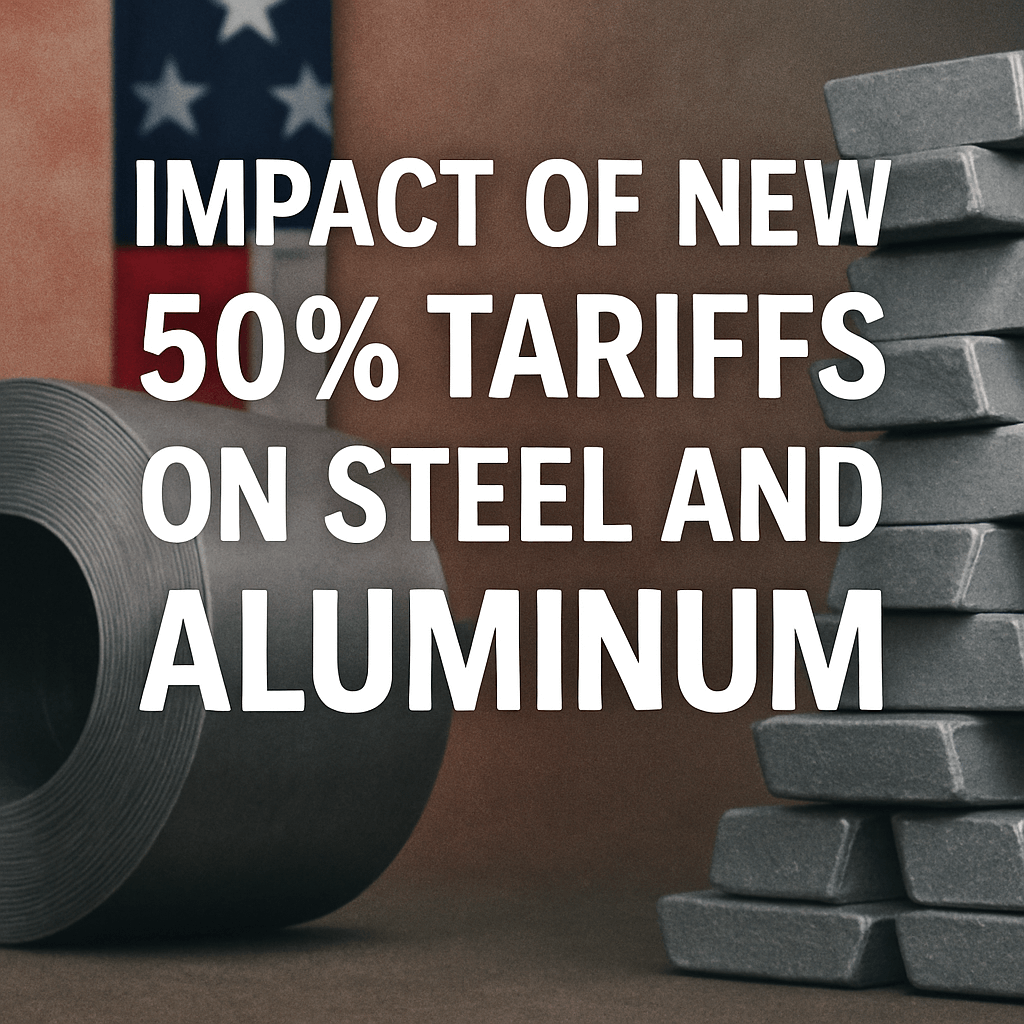Impact of New 50% Tariffs on Steel and Aluminum

On Wednesday, U.S. President Donald Trump’s administration implemented a significant increase in tariffs on foreign steel and aluminum, raising the rates to a staggering 50%. This decision is poised to have wide-ranging effects across various sectors, from automotive to construction, increasing costs for consumers and businesses alike.
Current Tariff Framework
As of now, steel and aluminum imports are subjected to a 25% tariff rate, a measure that has been in place since March 12, following Trump’s declaration to cancel previous exemptions for certain countries. The impending hike is significant, as it will result in tariffs nearly doubling, beginning at midnight on Wednesday. Notably, imports from the United Kingdom will retain the 25% tariff due to a recent trade agreement.
The Rationale Behind the Increased Tariffs
During a recent visit to a steel plant in Pennsylvania, Trump reiterated that the intent behind this steep increase in tariffs is to protect U.S. industries from foreign competition. He argues that the imposition of higher tariffs is crucial for sustaining the domestic steel market and securing national interests.
Trump remarked, “In my judgment, the increased tariffs will more effectively counter foreign countries that continue to offload low-priced, excess steel and aluminum in the United States.”
This perspective is grounded in the belief that protecting domestic production is essential not only for economic stability but also for strategic industries that are vital to national security.
Industry Response and Anticipated Impact
While some analysts commend the earlier tariffs imposed during Trump’s first tenure for bolstering domestic steel and aluminum production, critics caution that such drastic measures could disrupt industry dynamics.
- Strategic Adjustment: Critics, including representatives from the United Steelworkers union, emphasize the need for broader reforms rather than relying exclusively on tariffs. David McCall, International President of the Union, suggested that collaborating with allies—such as Canada—could more effectively address the challenges posed by unfair trade practices.
- Sectoral Impact: According to Matt Meenan, Vice President at the Aluminum Association, while the focus on strengthening the U.S. aluminum industry is appreciated, sustained increases in production also require “consistent, predictable trade and tariff policy.”
The Ripple Effect on Consumer Goods
The new tariffs will likely trigger notable increases in the prices of a variety of everyday products. Steel and aluminum are integral to a wide array of manufactured goods:
- Automotive Industry: The auto sector relies heavily on steel and aluminum. Increased costs for raw materials can have a cascading effect on vehicle prices and associated repair services.
- Consumer Goods: Common items such as canned foods, washing machines, and consumer electronics utilize these metals in their construction or packaging. The soaring import taxes are expected to translate to increased prices for consumers at grocery stores and retailers.
- Construction Sector: Many key construction materials utilize steel and aluminum as well. Builders and contractors may face higher material costs, which can lead to increased housing prices and overall construction expenditures.
Projections for Future Costs and Domestic Production
Since Trump took office, steel prices have escalated by 16%, with recent data indicating the price of steel surged to nearly $984 per metric ton as of March 2025—well above international competitors in Europe ($690) and China ($392). Industry analysts project that increased domestic demand, fueled by protective tariffs, may allow U.S. producers to hike prices further if foreign competition is effectively warded off.
While tariffs seem to protect U.S. industries, economists caution about the potential for inflation in the markets, as these increased production costs could seep into various sectors, leading to adverse implications for consumers.
Exceptions and Geopolitical Considerations
The newly instituted tariff will exclude imports from the U.K. under the recent trade agreement that aims to gradually eliminate the current duties. However, this exemption can be revisited if the U.S. determines non-compliance with the agreed framework by the British government.
Moreover, the prospect of retaliatory measures looms ominously as trading partners assess their responses to this significant tariff hike. The European Union had previously signaled that they are ready to counter with their own tariffs should negotiations falter.
Conclusion: Navigating Uncertain Waters
As the new tariffs come into effect, the extent of their ramifications will depend on a multitude of factors, including industry adaptability, consumer behavior, and potential international responses. Stakeholders across various sectors must prepare for the ripple effects of these policy changes, keeping an eye on both domestic markets and global trade dynamics.
Source: fortune